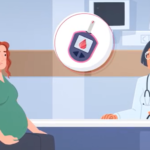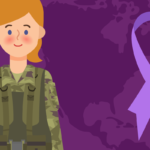For more than eight years, Sheila Mulligan, M.D., has served as an OB-GYN in the U.S. Navy, and she recently began leading her hospital’s gender-affirming care program. The simple existence of her role represents a significant change from what her father, who served as a psychologist in the military, experienced when caring for LGBTQ+ service members.
“There was such a stigma,” Mulligan said. “My father told me that even before the Don’t Ask, Don’t Tell policy, if someone told him they were gay or lesbian, he had to report it.”
Back then, revealing your LGBTQ+ identity could result in a dishonorable discharge. To provide care, Mulligan’s father would rephrase his guidance to prevent those service members from having to disclose. “OK, let’s talk about your hypothetical friend,” he’d say. Or “Let’s talk about relationships in general.”
Although those policies have been repealed, a culture of secrecy and fear doesn’t change overnight. A lack of education among providers about LGBTQ+ healthcare, along with concerns from patients about how they’ll be treated, can prevent people from getting the care they need.
For LGBTQ+ members who live with uterine conditions, those factors can mean years of pain or difficulty with fertility. And gender-affirming care for transgender members can be denied, potentially putting their physical and mental health at risk.
Read: Reproductive Care Is Limited for LGBTQ+ Troops >>
While many uterine healthcare concerns are similar among cisgender or heterosexual women and LGBTQ+ individuals, disparities and barriers to care can contribute to worse health outcomes for the LGBTQ+ community, said Tiffany Lange, Psy.D, a licensed clinical psychologist and expert in transgender and veteran mental health.
“Even with recent progress toward open service, LGBTQ+ service members are aware of the continued discussions and debates which may lead to their continued hesitancy to disclose their identity,” Lange said. “They may be hesitant to trust healthcare systems due to previous experiences with inappropriate questions, outdated language and legitimate fear of discrimination.”
The legacy of anti-LGBTQ+ policies
In 2011, the U.S. repealed bans on openly gay members serving in the military. A policy to fully allow transgender members to serve under their chosen gender identity was scheduled for 2017, but former President Trump announced the reinstatement of a transgender ban. That ban was on hold for a year as it was challenged in federal courts before the U.S. Supreme Court approved it in 2019. The transgender ban was later fully repealed by President Biden in 2021.
Although no LGBTQ+ bans are in place today, the former policies have had a lasting impact on LGBTQ+ healthcare. In addition to service members fearing being treated poorly because of their sexual orientation or gender identity, there were lost years of education, training and data collection on LGBTQ+ healthcare in the military. This meant their needs could be easily overlooked in healthcare training efforts, program development, research or spending. And the lack of data has left many medical providers unprepared to meet the needs of LGBTQ+ patients, according to Lange.
Reproductive health education, services and fertility care also tend to focus mainly on heterosexual, opposite-sex relationship dynamics, Lange said. A discussion about contraception might not meet the needs of a same-sex couple, for example, and fertility providers might not be aware that gender-affirming interventions, such as hormone therapy, can impact fertility among transgender and gender-diverse people. If the topic of fertility preservation is overlooked, it could lead to limited reproductive options in the future, she said.
“To begin to address the fertility needs and concerns of LGBTQ+ individuals, healthcare providers must be aware and knowledgeable about the diversity of relationships to effectively address reproductive concerns,” Lange said.
How bias can restrict care
Bias can have an adverse effect on care because medical providers who lack knowledge and experience working with members of the LGBTQ+ community may focus more on a person’s sexual orientation or gender identity than the actual condition, Lange said. It’s a situation that pushes the responsibility of education onto the patients by requiring them to inform their medical providers about their specific healthcare needs.
If LGBTQ+ service members have concerns about provider knowledge or ability to help, they could avoid discussing uterine concerns or avoid preventive healthcare appointments altogether. “In the military, you have to get approval to go to the doctor,” Mulligan said. “It can be hard to say to your commander that you need an hour off because you have a certain type of appointment — that can mean disclosing your identity.”
The avoidance of healthcare or lack of discussion with medical providers can create a slippery slope — warning signs and tests for conditions such as fibroids, endometriosis, HPV and cervical cancer might be overlooked or not provided, putting individuals’ health at risk.
For transgender people taking hormone replacement therapy, there can be an increased risk of uterine concerns, such as irregular bleeding, fibroids, cysts, endometriosis and polycystic ovarian syndrome.
Read: How PCOS Affects Your Body >>
Some LGBTQ+ service members might request a hysterectomy — possibly to stop chronic uterine conditions or because they see having their uterus removed as part of gender-affirming care. This could create another barrier to care if they’re dealing with medical providers who have a personal bias that gender-affirming surgical procedures aren’t necessary, which can delay or stop treatment.
There’s also the unique issue of access all service members face, one that’s even more complicated for LGBTQ+ members seeking fertility services. If you’re moved to a new station, that could mean the end of your treatment.
“You might be in a place where local laws don’t allow you to access certain fertility services because of your sexual orientation/gender identity, or you could be transferred to a different location while undergoing a process and unable to continue it,” Mulligan said. “We have no control over where you might be during all of that.”
How to improve care
Medical providers can help bridge the gap in LGBTQ+ healthcare by learning more about uterine health concerns and the needs of LGBTQ+ service members. And LGBTQ+ service members may have better care if they can find LGBTQ+-friendly healthcare providers. It’s also essential for the LGBTQ+ community to become knowledgeable about health care best practices so they can advocate for their needs and rights, Lange said.
Resources
LGBTQ+ Healthcare Provider Directory
This educational resource was created with support from Sumitomo Pharma.
The appearance of U.S. Department of Defense (DoD) visual information does not imply or constitute DoD endorsement.















